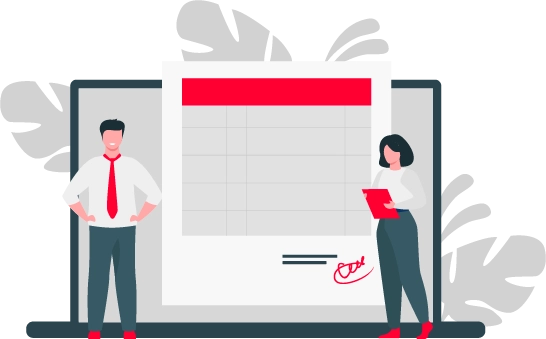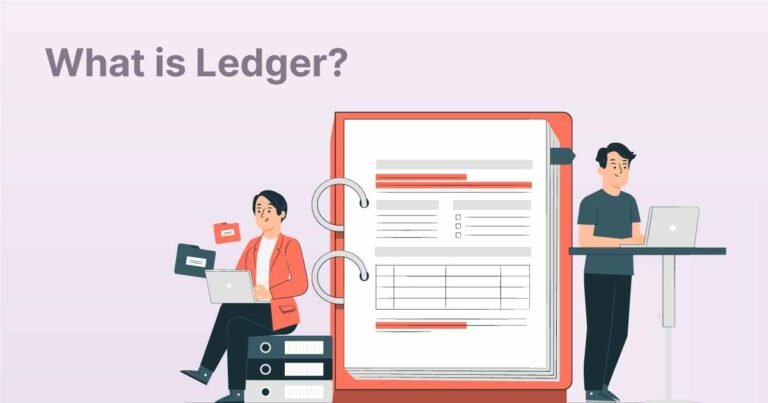A ledger account is the backbone of accounting, especially for students of Class 11th. This subject requires understanding ledger accounts in detail and solving practical problems involving the work with them. A ledger is a compendium of accounts that records the operations performed on a financial ledger over time through transactions. They make the way to apply theoretical knowledge to practical problems in Class 11. This article will explore ledger accounts with the practical problems that students can endure to solve.
What is a Ledger Account?
A ledger account is a formal mechanism for recording all the transactions regarding an account. The accounts can be cash, inventory, sales, or expenses. The journal entries are fed into the ledger. They are then combined with their accounts so that the account can see how different elements of financial activity affect the individual accounts. Each ledger account has two sides: debit and credit. In the double-entry system, every transaction involves two accounts, one debited and the other credited. It is important in solving practical problems in Class 11 accounting.
Things in a Ledger Account
You should grasp what goes into a ledger before you can solve ledger account problems. The first part is the account title, which denotes what kind of account you’re tracking (Cash, Sales, etc). The ledger, with columns for dates, particulars (also called transactions), debits, credits, and a running balance, is also included. The amount and date are entered in each account for the appropriate transaction. The balance is updated as transactions are posted, showing either a debit or credit balance. A working knowledge of these components is important when working on practical problems.

Types of Ledger Accounts
Ledger accounts fall into three main categories: Real, personal, and nominal. Companies that have transactions with individuals and businesses are used. These assets include cash, buildings, machinery, and real accounts. Nominal accounts are income, expenses, gains, and losses. An idea of what types of accounts are involved when solving practical problems will help decide which accounts to credit and which should be debited. This is the knowledge on which the Class 11 student can further solve the ledger account problem.
The Posting Process
Posting the process itself is key for ledger accounts. Posting involves getting financial data for journal entries into the specific ledger account. A transaction affects two accounts, one on debit and the other on credit. Students should follow this process carefully to avoid errors. For instance, a business takes in cash, and that account — the cash account — will be debited while its counter account is credited. One practical problem that students have to solve is identifying correct accounts and posting transactions to each correctly.
Common Practical Problems in Ledger Accounts
Normally, recording transactions and posting in the appropriate ledger accounts would be done in class 11 practical. For instance, the students may be required to create ledger entries for a business that sold something, would pay something, or would incur something. The second scenario is recording purchases on credit or payments made by customers. These problems also challenge a student’s capacity to include transactions in a ledger, yet their comprehension of how such entries influence the financial standing of the business. Solving these problems with practice improves the skills of those involved in analytical and accounting.
Solving Practical Problems
Students should first read the problem carefully to understand the transactions involved as they approach practical problems with ledger accounts. Then, it will determine which accounts are being influenced by every transaction. Application following a double entry system rules; determine whether the accounts should be debited or credited. After this, the entries are posted to the correct ledger account in the debit and credit columns for accuracy. In the last step, you can check the balance of each account once all transactions are posted. This method is the key to solving practical problems correctly and efficiently.
Avoiding Common Mistakes
The most common mistake in solving ledger account problems that students make is not identifying properly which accounts should be debited and credited. It leads to imbalanced ledgers and wrong financial records. Students must learn the rules for debiting and crediting different accounts to avoid this. A second mistake is when credits are added up without considering that the debits must likewise be added up. Maintaining balance in the ledger is dear to financial account records. Such mistakes can be avoided by careful attention to detail and by solving practical problems care freely.
Practical Example of a Ledger Problem
To illustrate how ledger accounts are used in practical scenarios, let’s consider a business with the following monthly transactions: I spent $500 on office supplies on credit, sold goods for $1,000 in cash, and paid $700 in salaries. To solve this practical problem, find the accounts you want to merge. The Office Supplies Account and Accounts Payable are used to purchase office supplies. Sales to goods is a transaction involving the Cash Account and Sales Account. Salaries account, and cash is involved in salary payments. Each transaction is posted twice: The once was a debit, and the once was a credit. The result is that this process ensures that the ledger remains balanced.
Regular Practice Importance
It is really important to practice ledger account problems. The more practical problems a student tackles, the more confident they are in their ability to analyze and post transactions accurately. Practice is good as it reinforces the rule of debit and credit, which is one of the fundamentals while trying to solve the ledger problems. Students also learn to work critically on complex financial situations and make correct accounting decisions by regularly working through problems. The practice also masters ledger accounts and thereby prepares students for accounting exams as well as accounting challenges of the future.
Learning Ledger Accounts for Academic Achievement
Ledger accounts, a must to learn in Class 11 accounting, is another area that must be diligently learned and mastered to keep up with any academic success. A wide range of accounting practices involves solving practical problems about ledger accounts. Later in their study, students’ understanding of this ledger account will enable them to deal with more complicated financial scenarios. Working with ledger accounts also provides real-world skills equally important when running a business — accurate financial record keeping. When students learn ledger accounts, they prepare themselves for the real stuff that will be on exams and for their careers ahead.
Conclusion
Accounting is the backbone of accounting and part of the class 11 curriculum. Ledger accounts are the backbone of this process. Students aspiring to master accounting must know about ledger accounts and how to solve real-time problems. It includes recording transactions, posting them accurately, and balancing accounts. With regular practice and a systematic approach, students can overcome common errors and problems dealing with ledger account problems. These skills assure academic success ando prepare you for the next step in studying accounting and finance.





